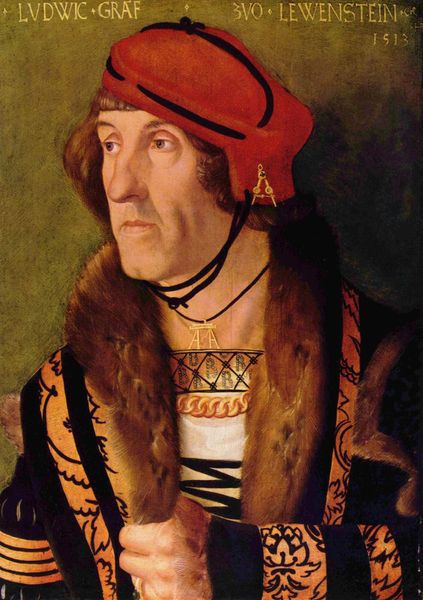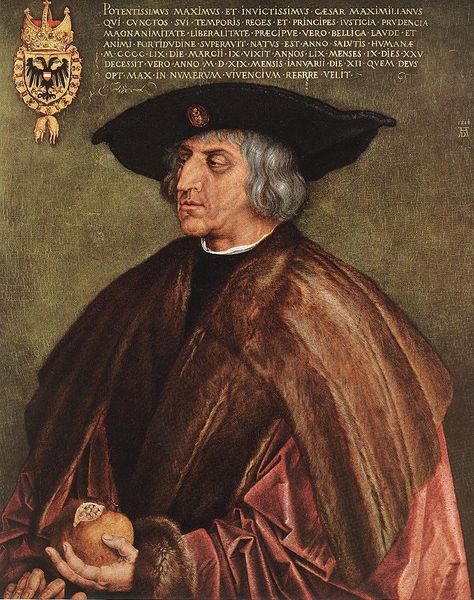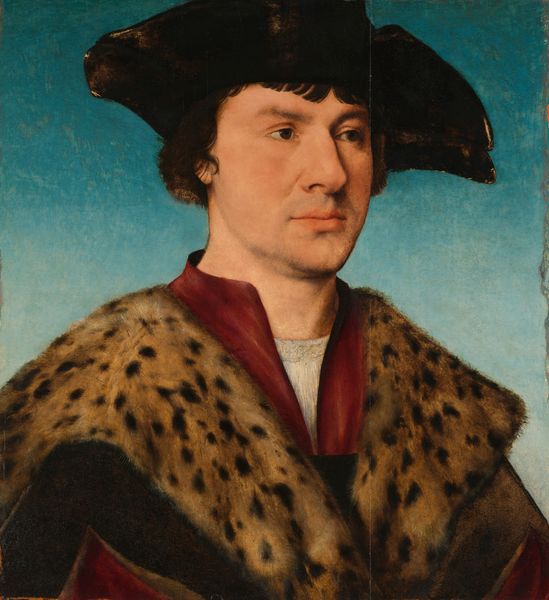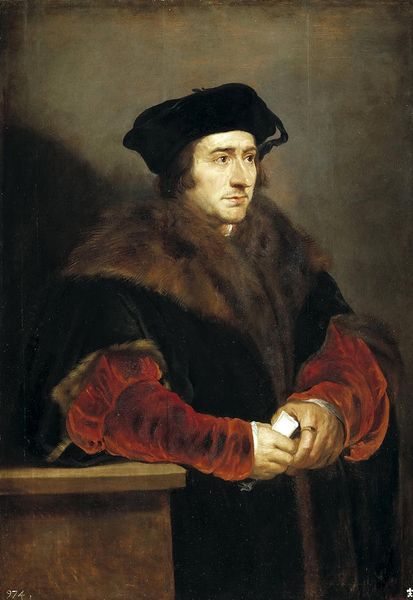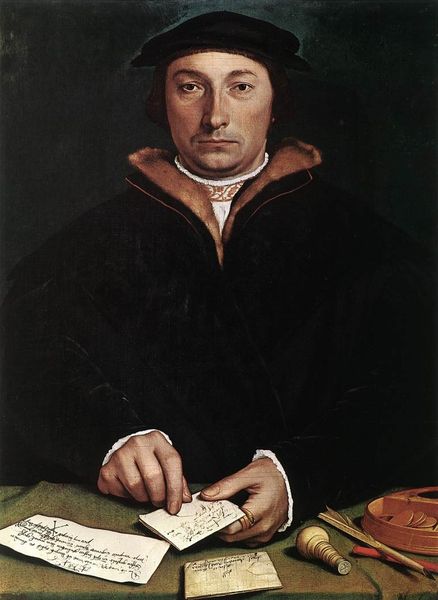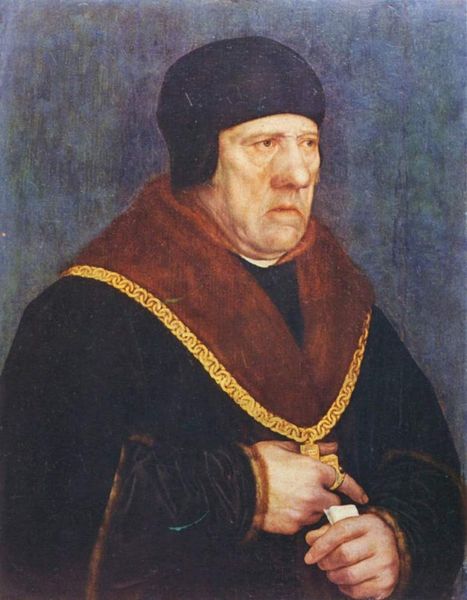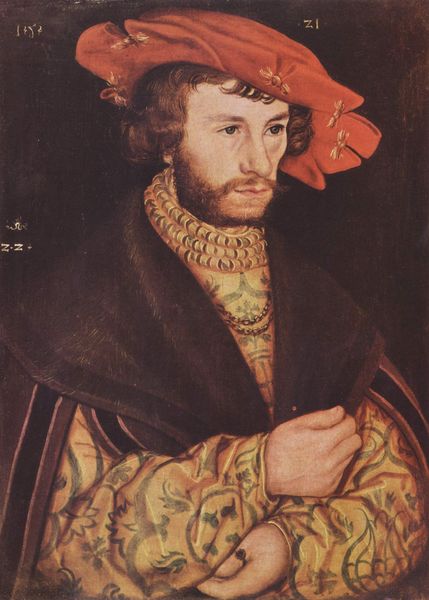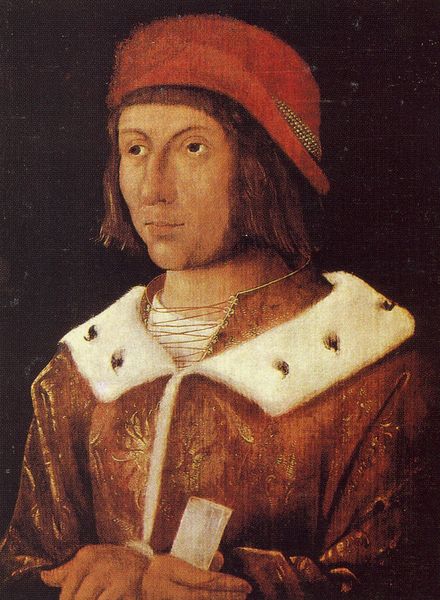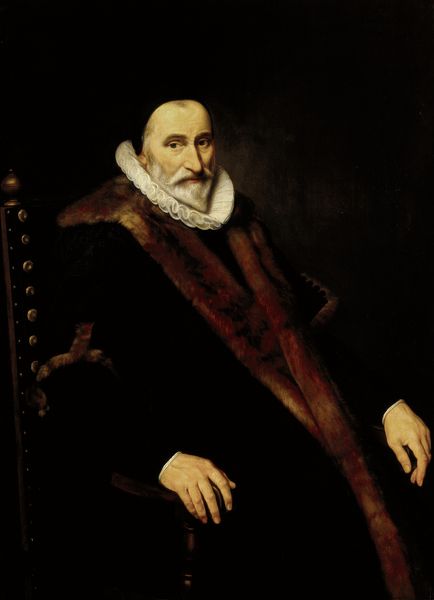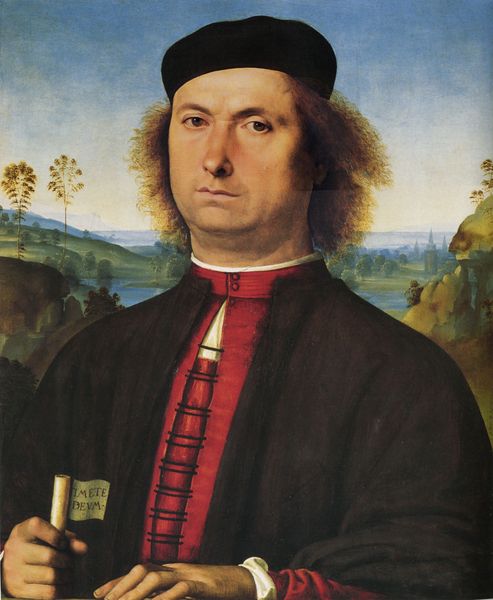
painting, oil-paint
#
portrait
#
portrait
#
painting
#
oil-paint
#
11_renaissance
#
history-painting
#
northern-renaissance
#
realism
Dimensions: 58.4 x 74.9 cm
Copyright: Public domain
Curator: Before us is Hans Holbein the Younger's oil on panel painting "Portrait of Sir Thomas More," created in 1527. It’s currently housed at the National Portrait Gallery in London. Editor: My initial impression is one of intense, almost unsettling realism. Holbein masterfully captures More’s controlled gaze and the weighty texture of his garments. Curator: Absolutely. This painting speaks volumes about the social context in which it was created. Holbein, a German artist working in England, gained prominence painting members of the English court. This work shows the influence of mercantile trade in how materials like the furs are luxurious and accurately depicted as symbols of More’s position in the 16th century. Editor: From a formalist standpoint, consider how Holbein employs color. The deep reds and blacks of More's clothing contrast against his pale face and the background. Notice the artist's rendering of light which guides our eye to More's features, making him a tangible figure that feels psychologically deep. The geometrical shapes are subdued, but present everywhere from his hat to his fur and tunic. Curator: And think about the craftsmanship and the commissions involved. Holbein likely worked with assistants. This reflects how the mode of production impacts art—it was both an artistic creation and a collaborative commodity reflecting class divisions and the patron's status. It's also about the relationship of the subject, More, and his political agency. Editor: Indeed, but it also transcends that. Holbein achieves an almost photographic fidelity. Look at the minute details in the fur collar and the chain! And consider how these elements combine to achieve balance and convey More’s human presence and complexities within that pictorial space. The details really contribute to its symbolic qualities. Curator: So true. Holbein was clearly responding to a market, to the tastes and demands of his patrons in this time, to showcase prestige and power. The piece as an object is intrinsically linked to its historical environment. Editor: Agreed, and examining its artistic structure can unveil aspects of reality that might otherwise remain unseen. Both shape our perceptions of the Renaissance, and particularly of Thomas More.
Comments
No comments
Be the first to comment and join the conversation on the ultimate creative platform.
